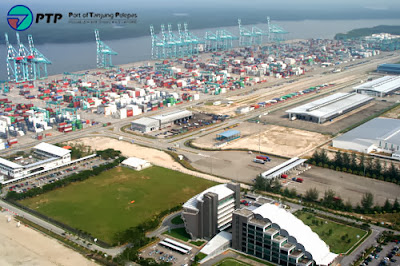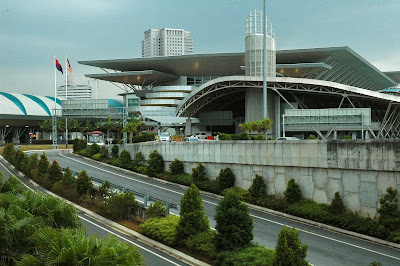เหตุใดสิงคโปร์จึงรวยเป็นอันดับ 1 ของโลก
โดย ผศ. ดร. พรรณชฎา ศิริวรรณบุศย์
จากการสำรวจของสถาบันชั้นนำทางการเงินของโลก เช่น บริษัท ไนท์แฟรงค์ ซึ่งเป็นที่ปรึกษาด้านอสังหาริมทรัพย์ชั้นนำของโลก และซิตี้ ไพรเวท แบงก์ ซึ่งอยู่ในเครือซิตี้กรุ๊ป ได้เปิดเผยข้อมูลในการสำรวจความมั่นคงของประเทศต่างๆในโลก ประจำปี พ.ศ. 2555 พบว่ารายได้ประชากรต่อหัวของประเทศสิงคโปร์สูงขึ้นอย่างต่อเนื่องจนแตะที่ระดับ 56,532 ดอลลาร์สหรัฐ หรือราว 1,809,024 บาทต่อคน ซึ่งกลายเป็นอัตรารายได้ประชากรต่อหัวที่สูงที่สุดในโลก ตามด้วยอันดับ 2 ประเทศนอร์เวย์ ที่มีรายได้ต่อหัวอยู่ที่ 51,226 ดอลลาร์สหรัฐ หรือประมาณ 1,639,232 บาทต่อคน ส่วนอันดับที่ 3 ได้แก่ สหรัฐอเมริกา ที่มีขนาดมูลค่าเศรษฐกิจใหญ่อันดับ 1 ของโลก แต่มีรายได้ประชากรต่อหัวอยู่ที่ 45,511ดอลลาร์สหรัฐ หรือประมาณ 1,456,352 บาทต่อคน
อีกบริษัทที่มีชื่อเสียงในการจัดลำดับความร่ำรวย คือนิตยสารฟอร์บ ได้จัดอันดับประเทศสิงคโปร์เป็นประเทศที่ร่ำรวยเป็นอันดับ 3 ของโลก โดยมี ผลิตภัณฑ์มวลรวมภายในประเทศ (จีดีพี) ต่อหัวต่อปี (GDP (PPP)) สูงถึง 56,700 ดอลลาร์สรัฐ รองมาจาก การ์ตา และลักเซมเบิร์กตามลำดับ การจัดลำดับดังกล่าวของฟอร์บ ใช้สถิติที่คำนวณโดยกองทุนการเงินระหว่างประเทศ หรือ IMF โดยดูจากตัวเลข GDP (PPP) ที่ปรับตามความเท่าเทียมของอำนาจซื้อของประชาชนภายในประเทศ ฟอร์บยังได้วิเคราะห์อีกว่าสิงคโปร์ร่ำรวยได้อย่างต่อเนื่อง เนื่องมาจาก เป็นศูนย์กลางเทคโนโลยี การผลิต การให้บริการ และการเงิน
หลายท่านคงสงสัยว่าทำไมสิงคโปร์ถึงร่ำรวยขนาดนี้ บางท่านอาจบอกว่า เพราะเป็นประเทศขนาดเล็ก ประชาชนมีไม่มาก ไม่ยากต่อการขยายความเท่าเทียมกันทางด้านรายได้ให้กับประชาชน บางท่านอาจมองว่าเป็นเพราะนโยบายที่มีประสิทธิภาพของรัฐบาล รัฐบาลมุ่งมั่นพัฒนาประเทศ ไม่มีปัญหาการคอร์รัปชั่นของนักการเมือง รวมทั้งข้าราชการทั่วไป และ กฎหมายมีการบังคับใช้อย่างจริงจัง แต่อีกหลายท่านอาจบอกว่าเป็นเพราะการจัดฮวงจุ้ยของประเทศ ทำให้ประเทศพัฒนาได้อย่างรวดเร็ว และร่ำรวยกว่าประเทศเพื่อนบ้านอื่นๆ มีหลายปัจจัยที่มีการคาดคะเนและวิเคราะห์กันถึงความร่ำรวยอย่างต่อเนื่องของประเทศเล็กๆที่มีพื้นที่เท่ากับจังหวัดภูเก็ตของบ้านเรา แต่ปัจจัยที่อาจนำไปสู่การพัฒนาอย่างต่อเนื่องของประเทศ และประชาชนในสิงคโปร์อาจแบ่งได้เป็น 3 ประเด็น คือ
ประเด็นที่แรก คน คนสิงคโปร์ มีความขยันขันแข็ง และเก็บออมเงินอย่างสม่ำเสมอ 50 % ของรายได้ ของคนสิงคโปร์จะเก็บออมไว้ ส่วนที่เหลืออาจนำไปใช้จ่ายในชีวิตประจำวัน หรือซื้อความสุขให้ตนเอง หรือนำไปลงทุนในด้านอื่นๆ
หากท่านได้มีโอกาสเดินทางไปยังสิงคโปร์จะพบว่าคนสิงคโปร์ขยันขันแข็ง ไม่ขี้เกียจ ผู้สูงวัยจำนวนมากยังคงทำงาน ในร้านอาหารภายในห้างสรรพสินค้า หรือ ร้านอาหารทั่วไป สามารถเห็นผู้สูงอายุจำนวนมากทำงานเป็นพนักงานเก็บจาน ล้างจาน และทำความสะอาดโต๊ะ พวกเขาเหล่านี้ไม่ได้รอให้ลูกหลานมาเลี้ยงดู หรือพึ่งพารัฐบาลแต่เพียงอย่างเดียว
ประเด็นที่สอง คือ การแสวงหาความรู้ คนสิงคโปร์มีความตั้งใจในการใฝ่หาความรู้ เพื่อเพิ่มศักยภาพของตนเอง ซึ่งจะนำไปสู่การพัฒนาอันยั่งยืน ของประเทศต่อไป เห็นได้จากคุณภาพการศึกษาของประเทศสิงคโปร์อยู่ในอันดับต้นๆ ของโลก มหาวิทยาลัยแห่งชาติของสิงคโปร์ หรือ National University of Singapore เป็นมหาวิทยาลัยที่ติดอันดับ 1 ใน 5 ของเอเชีย มหาลัยอันดับรองๆลงมาของประเทศ ไม่ว่าจะเป็น Nanyang Technological University และ Singapore Management University ก็ได้รับการยอมรับในระดับนานาชาติ
เมื่อสัปดาห์ที่แล้ว ดิฉันได้มีโอกาสได้รับเชิญ จากมหาวิทยาลัยในประเทศสิงคโปร์ให้ไปสอนนักศึกษาในระดับปริญญาตรี ซึ่งทำให้ได้เห็นถึงศักยภาพ ความรู้ ความสามารถของนักศึกษาสิงคโปร์ รวมทั้งความเอาใจใส่ในการใฝ่หาความรู้ และเทคโนโลยีที่มีใช้ในชั้นเรียนที่มีประสิทธิภาพมาก นักศึกษาทุกคนเตรียมตัวมาเรียนอย่างดี พร้อมทั้งกล้าแสดงออก ถามคำถามจำนวนมาก เพื่อให้เกิดความชัดเจนในประเด็นที่ตนเองสงสัย ซึ่งอาจหาได้อยากในประเทศอาเซียนอื่นๆ รวมทั้งนักเรียนนักศึกษาในบ้านเรา
นอกจากนี้การเรียนการสอนของมหาวิทยาลัยในสิงคโปร์ เน้นการให้นักศึกษาได้เรียนรู้ด้วยตนเอง ไม่พึ่งพาความรู้จากการสอนของอาจารย์ในชั้นเรียนแต่เพียงอย่างเดียว ซึ่งกระตุ้นให้นักศึกษาต้องกระตือรือร้นใฝ่หาความรู้ และมีความคิดริเริ่มในวิชานั้นๆ บ้านเราเองมหาวิทยาลัยหลายแห่งได้เริ่มพัฒนาการเรียนการสอนในลักษณะนี้แล้วเพื่อเพิ่มศักยภาพให้นักศึกษากล้าคิด กล้าแสดงออกและมี ความคิดริเริ่มเป็นของตนเองในวิชาต่างๆ แต่อาจคงยังต้องใช้เวลาอีกซักระยะหนึ่งที่จะได้เห็นนักศึกษาไทยกล้าแสดงความคิดเห็น หรือตั้งคำถามภายในชั้นเรียนเหมือนในสิงคโปร์
ประเด็นสุดท้าย คือ นโยบายที่มุ่งพัฒนาอย่างก้าวกระโดดของภาครัฐ รัฐบาลของสิงคโปร์สร้างนโยบายที่เข้มแข็งเพื่อผลักดันการเจริญเติบโตของประเทศในทุกๆด้าน โดยเฉพาะอย่างยิ่งทางด้านเศรษฐกิจ นโยบายการถมทะเล หรือ Land Reclamation เพื่อขยายพื้นที่ของประเทศเป็นนโยบายหนึ่งที่น่าสนใจ และมุ่งพัฒนาประเทศทั้งทางด้านสังคมและเศรษฐกิจ
การถมทะเลดังกล่าวสามารถเพิ่มเนื้อที่ได้ถึง 22 % หรือ 130 ตารางกิโลเมตรในช่วง 50 ปีที่ผ่านมา โดยอาศัยทรายที่นำเข้าจากต่างประเทศ โดยเฉพาะอย่างยิ่งจากอินโดนีเซีย ภายในปี ค.ศ. 2030 (พ.ศ.2573) สิงคโปร์ยังมีเป้าหมายที่จะถมทะเล เพื่อเพิ่มพื้นที่ของประเทศให้ถึง 100 ตารางกิโลเมตร อีกด้วย
ต้องชื่นชมและยอมรับแนวคิดของสิงคโปร์อย่างหนึ่งคือความพยายามที่จะเอาชนะข้อจำกัดต่างๆภายในประเทศของตน และพยายามกระโดดไปสู่เป้าหมายที่มีมูลค่าสูง ดังนั้นประเทศสิงคโปร์ไม่เคยหยุดนิ่งในการพัฒนาแบบก้าวกระโดดอย่างต่อเนื่อง
การถมที่ชายฝั่ง หรือ หรือ Land Reclamation ก็เช่นกัน นโยบาย นี้ถูกกำหนดให้เป็นวาระระดับชาติเกี่ยวข้องกับการปฏิบัติหน้าที่ของหลายองค์กรด้วยกัน ตั้งแต่รัฐบาลรวมถึงองค์กรต่างๆของรัฐ โดยองค์กรหลักที่ทำหน้าที่รับผิดชอบโครงการถมที่ชายฝั่งทะเลนี้ คือ กระทรวงกฎหมาย หรือ Ministry of Law โดยกระทรวงนี้ได้ส่งต่อหน้าที่ไปยังคณะกรรมการแห่งชาติซึ่งถูกจัดตั้งตามกฎหมาย (Statutory Board) 3 องค์กรหลักคือ (1.) Housing and Development Board (2.) Jurong Town Corporation (3.) Port of Singapore Authority ซึ่งองค์กรหลักทั้ง สามองค์กรนี้จะดูแลในเรื่องการถมที่ชายฝั่งทะเล และมีหน้าที่รับผิดชอบโครงการถมที่ชายฝั่งตั้งแต่ยุคบุกเบิกของโครงการ
การถมทะเลดังกล่าวไม่ได้มีจุดประสงค์เพื่อเพิ่มพื้นที่สำหรับที่อยู่อาศัยของประชากรสิงคโปร์ที่มากขึ้นทุกวัน หรือเพื่อรองรับการขยายตัวทางเศรษฐกิจเท่านั้น รัฐบาลสิงคโปร์ยังได้มีการสร้าง และพัฒนาแหล่งท่องเที่ยวใหม่ๆเพื่อดึงดูดนักท่องเที่ยวจากต่างประเทศ เนื่องจากสิงคโปร์ ไม่มีแหล่งท่องเที่ยวที่เป็นวัฒนธรรมโบราณ และแหล่งธรรมชาติที่สวยงามตระการตา เหมือนกับประเทศเพื่อนบ้านอื่นๆมากนัก ดังนั้นการสร้างแหล่งท่องเที่ยวใหม่ๆดังกล่าวบนพื้นดินที่ได้มีการขยาย และพัฒนาจึงเป็นจุดสำคัญในการดึงดูดนักท่องเที่ยว
สถานที่ท่องเที่ยวที่ได้รับการพัฒนาใหม่ๆ เช่น โรงแรมมารีน่าเบย์แซน (Marrina Bay Sand) ซึ่งเป็นโรงแรมขนาดใหญ่กว่า 50 ชั้น มีรูปทรงคล้ายเรืออันดูแปลกตา และกลายเป็นสัญลักษณ์ สำคัญอีกแห่งหนึ่งของประเทศ สถานที่ท่องเที่ยวอีกแห่งที่น่าสนใจ คือ การ์เด้นบายเดอะเบย์ (Garden By the Bay) ซึ่งเป็นการสร้างดอกไม้จำลองขนาดยักษ์ อยู่กลางพื้นที่ใหม่ที่ได้ถมทะเลขึ้นมา ทั้ง 2 แห่งนี้ได้รับความสนใจจากนักท่องเที่ยว โดยเฉพาะประเทศเพื่อนบ้านอย่าง ไทย อินโดนีเซีย และมาเลเซีย เป็นอย่างมาก ในช่วงสุดสัปดาห์ จะพบว่ามีนักท่องเที่ยวจำนวนมากจากประเทศเพื่อนบ้านเหล่านี้เดินทางไปท่องเที่ยวที่สิงคโปร์ นอกจากแหล่งท่องเที่ยว 2 แห่งนี้แล้ว สิงคโปร์ยังได้พัฒนาแหล่งท่องเที่ยวอื่นๆ อีก เช่น สวนนกจูล่ง เซ็นโตซ่า และ สิงคโปร์ฟลายเยอว์ เป็นต้น
แนวคิดในการพัฒนาแหล่งท่องเที่ยวดังกล่าว ต้องถือว่าประเทศสิงคโปร์ประสบความสำเร็จอย่างยิ่ง จากประเทศที่ไม่มีสถานที่วัฒนธรรมโบราณ หรือแหล่งธรรมชาติที่ดึงดูดนักท่องเที่ยวได้ แต่ประเทศนี้กลับสามารถพัฒนาแหล่งท่องเที่ยวใหม่ให้กลายเป็นจุดดึงดูด และได้รับความนิยมจากนักท่องเที่ยวนานาชาติ
รัฐบาลไทย และอดีตนายกรัฐมนตรี ทักษิณ ชินวัตร ได้เคยพยายามเลียนแบบโครงการ หรือนโยบายของสิงคโปร์หลายอย่างทั้งการสร้างบ่อนคาสิโน เอ็นเตอร์เทนเมนท์ คอมเพลกซ์ และการถมทะเล แต่ผลคงไม่สามารถดำเนินการได้ง่ายนัก เนื่องจากการสร้าง Mega Projects ของไทยต้องฝ่าหลายด่านทั้งกฎหมาย, NGOs, การมีส่วนร่วมของประชาชนจากภาคส่วนต่างๆ และการตรวจสอบทางภาคการเมือง ซึ่งทำให้ไม่สามารถพัฒนาได้อย่างรวดเร็ว เหมือนที่เกิดขึ้นในประเทศสิงคโปร์
ความสำเร็จในการพัฒนาประเทศของสิงคโปร์ จึงน่าจะเป็นตัวอย่างที่ดีให้กับประเทศเพื่อนบ้านในอาเซียน หากประเทศที่กำลังพัฒนาของอาเซียนลองนำแนวคิดในการพัฒนาประเทศของสิงคโปร์ไปใช้ อาจทำให้ประเทศเหล่านั้นสามารถพัฒนาได้อย่างก้าวกระโดด ซึ่งจะส่งผลต่อการพัฒนาของภูมิภาคต่อไปอีกด้วย
Resource from:





















.JPG)





.jpg)

